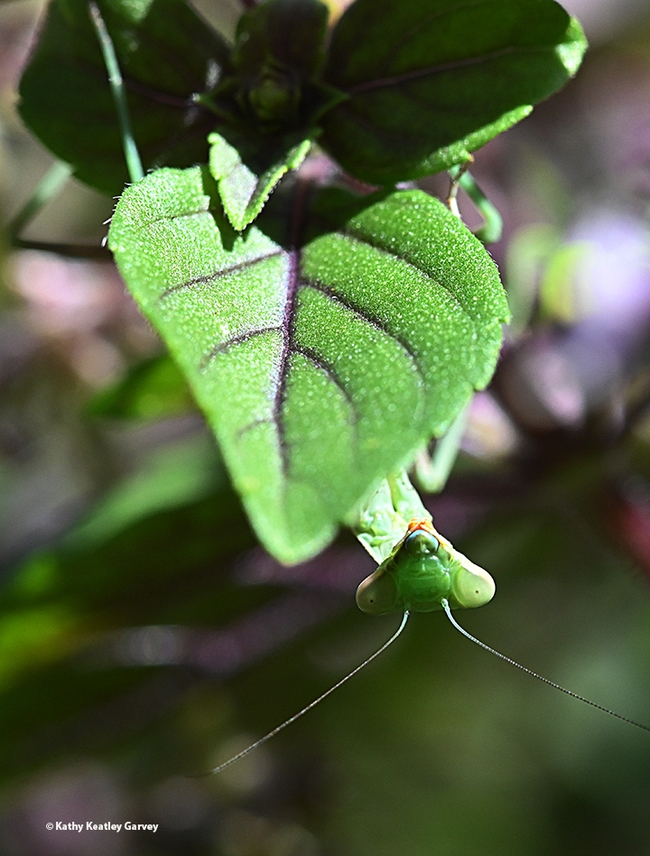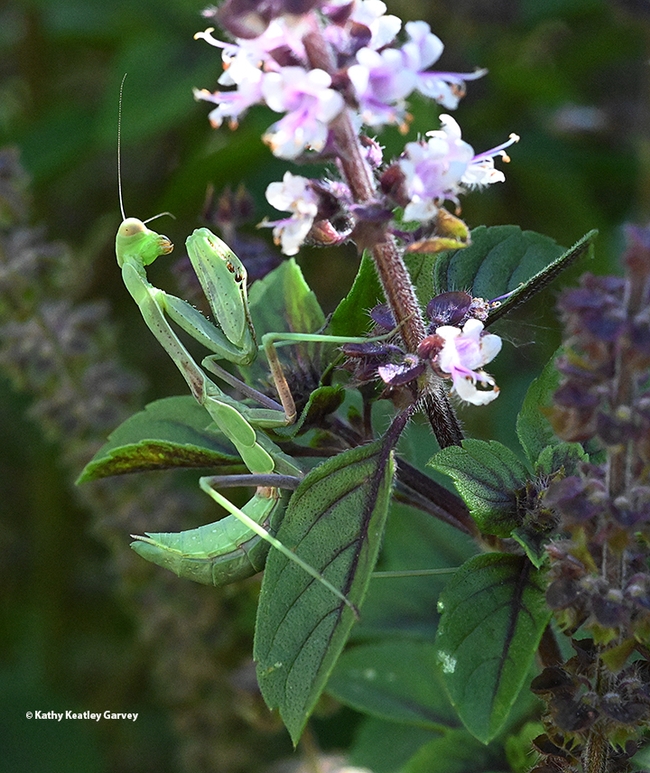- Author: Kathy Keatley Garvey
On Labor Day, a federal holiday, we celebrate the our country's labor movement, our gratitude, and our achievements.
But there is no Labor Day holiday for the worker bee, one of three castes (queen, worker and drone) in a honey bee colony. No Labor Day holiday for the queen, either. In peak season, she will lay from 1000 to 2000 eggs a day. A laborious task, to be sure.
Most will be worker bees, the most needed of the three castes. Worker bees perform such age-related duties as nurse maids, nannies, royal attendants, builders, architects, foragers, dancers, honey tenders, pollen packers, propolis or "glue" specialists, air conditioning and heating technicians, guards, and undertakers. The worker bees (sterile females) run the hive. They're the "you-go" girls, the "you-got-this" girls and the "go-to" girls.
No "atta boys" here. The boys, or drones, have one job to do: mate with a virgin queen (in flight) and then they die. (Or as the late Eric Mussen, UC Extension apiculturist emeritus and a longtime member of the UC Davis Department of Entomology and Nematology faculty, would add "They die with a smile on their face.")
It's a matriarchal society.
But life is short for the foraging worker bees.
"Worker bees live for approximately five to six weeks in the spring and summer," writes author and retired bee scientist and bee wrangler Norman Gary, emeritus professor of entomology at the University of California, Davis, in his book, Honey Bee Hobbyist: The Care and Keeping of Bees.
"Those reared in the fall live for several months--long enough for the colony to survive the winter--and are replaced by young bees in late winter or early spring," says Gary, whose entire apicultural career spans 75 years, from student to retirement 26 years ago. (He still works with bees.)
For the foragers, collecting nectar and pollen can be dangerous. Their searching expeditions and forays can take them four to five miles from their hive. Due to predators (including birds, praying mantids and spiders), pesticides and other issues, many do not return home at night.
They put the "severe" in persevere.
What's not to admire about the honey bee? All hail Apis mellifera, not just on Labor Day, but every day of the year. You go, girls! You got this!
(Editor's Note: Interested in becoming a beekeeper or learning more about beekeeping? Be sure to check out the UC Davis-based California Master Beekeeper Program, directed by Extension apiculturist Elina Lastro Niño of the UC Davis Department of Entomology and Nematology.)
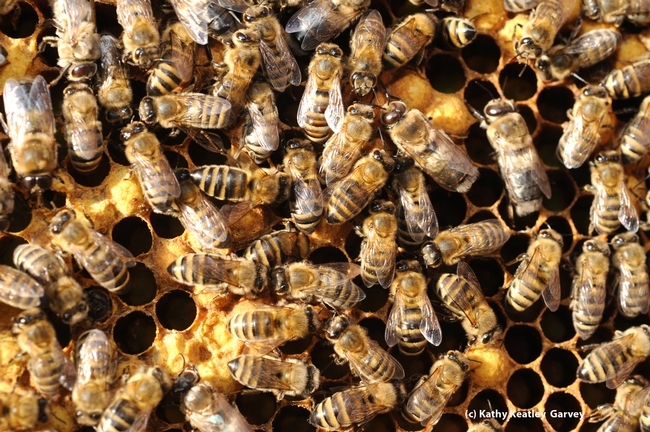
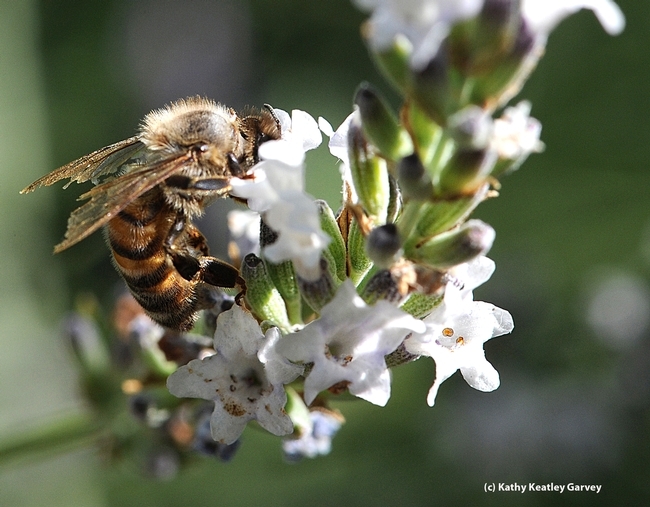
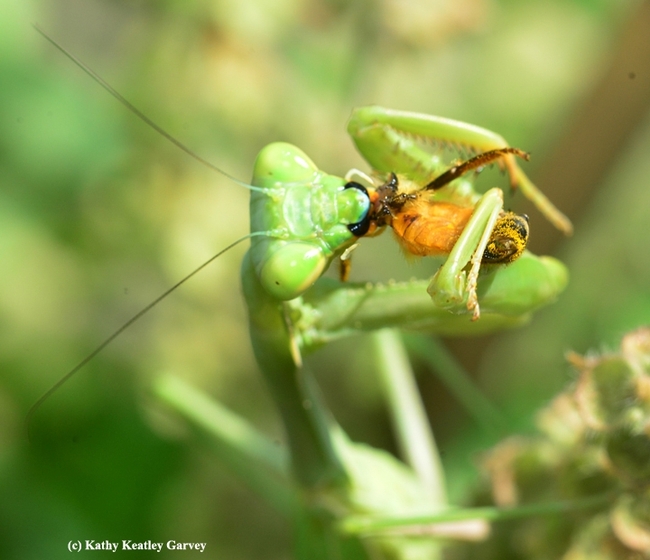
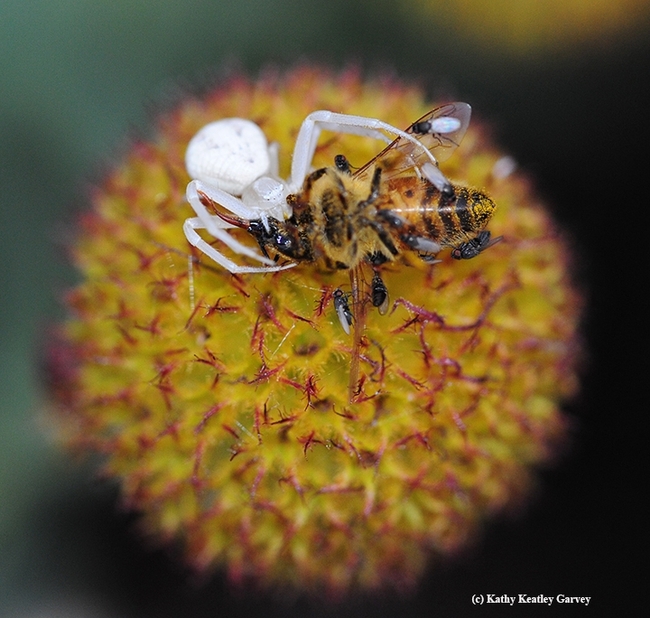
- Author: Kathy Keatley Garvey

Be on the lookout for migratory Monarch butterflies from the Pacific Northwest heading south to their overwintering sites along the California coast.
It's been a very good year for Monarchs in the Pacific Northwest (PNW), according to noted entomologist and Monarch researcher David James, an associate professor at Washington State University (WSU), Pullman.
"The numbers we are seeing in the PNW this summer are consistent with numbers I've seen in summers past when the overwintering population was approximately 250,000 as it was last winter," he wrote in an email Aug. 31.
"I have been compiling all the PNW monarch reports I have come across this summer--as I have done for many summers in the past. These have been from iNaturalist, Journey North, various Monarch Facebook pages and personal communications I get many people telling me they've seen a monarch. I verify all reports, that is, they must have a photo, or I know the reporter is experienced."
"Last summer (2021) I verified approximately 60 Monarch sightings in the PNW. This summer, I have had approximately 500 verified reports. "So, I think we have seen an 8-10 fold increase in Monarch numbers this summer in the PNW. The majority have been in Oregon, followed by Idaho, Washington and British Columbia. There are also positive reports of good numbers of Monarchs in Utah, Nevada and eastern California."
"So the signs are there for a good migration back to California this fall," James said. "The big question will be whether the migrants proceed normally to the overwintering sites or whether they do what they did in 2020, establish winter breeding populations in slightly inland places like San Francisco and Los Angeles. The determining factor will be the temperatures California experiences over the next six weeks. If average temperatures prevail, then the butterflies will go to the coastal overwintering sites and we will have--I think--spectacular numbers again...at least as high as last year and possibly much higher."
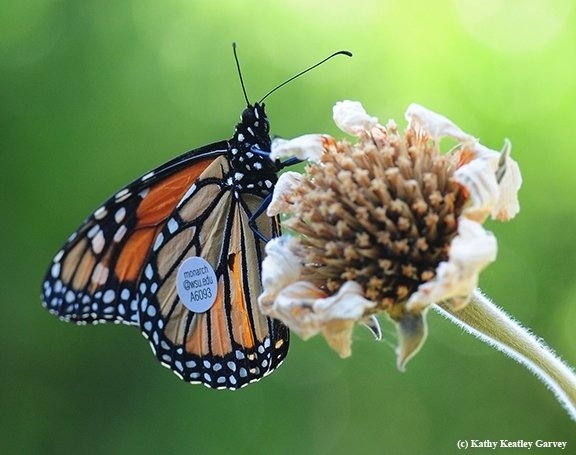
To track migratory Monarchs, citizen scientists in the David James' research program affix a tag on the discal cell (underside of the hind wing). The tag does not interfere with its flight.
This year James handed out 2000 tags to citizen scientists in southern Oregon.
One of his citizen scientists, Steve Anderson of Ashland, Ore., tagged a male Monarch on Aug. 28, 2016 that stopped for nectar in our Vacaville pollinator garden on Sept. 5, 2016. The tag read “Monarch@wsu.edu A6093." It hung around for five hours. (See Bug Squad blog and WSU news story)
"So, assuming it didn't travel much on the day you saw it, it flew 285 miles in 7 days or about 40.7 miles per day," James told us back in 2016. "Pretty amazing. So, I doubt he broke his journey for much more than the five hours you watched him--he could be 100 miles further south by now."
This year, to date, we have not seen a single Monarch in our pollinator garden. James estimates we will start seeing the first ones within the next few weeks. "Johnson has already had one of his tagged monarchs recovered, admittedly only a few miles away but it was heading south!"
Butterfly guru Art Shapiro, UC Davis distinguished professor of evolution and ecology, spotted four within half an hour in the UC Davis Arboretum and Public Garden on Aug. 26. One was a tattered male. (See Bug Squad blog)
What to do if you see a WSU-tagged Monarch? Photograph it, if you can, and contact David James at david_james@wsu.edu or the PNW Facebook page. Also, report any Monarch sightings to iNaturalist and Journey North.
Meanwhile, Monarch scientists, citizen scientists and Monarch enthusiasts are looking forward to the 2023 International Western Monarch Summit, set Friday through Sunday, Jan. 20-22 at Pismo Beach, San Luis Obispo. Registration is now underway. It's sponsored by Western Monarch Advocates (WMA), which relates its mission is "to serve as an overarching entity to encourage and facilitate communication and interaction of groups and individuals committed to restoring the western monarch butterfly population-regardless of their affiliation or location--in the hope that the shared knowledge will empower each of them to improve and better achieve restoration goals within their own respective affiliation or location."
The International Union for the Conservation of Nature (IUCN) placed the migratory monarch butterfly on its Red List of threatened species on July 21, 2022, classifying it as endangered.
"In the 1990s, nearly 700 million monarchs made the epic flight each fall from the northern plains of the U.S. and Canada to sites in the oyamel fir forests north of Mexico City, and more than one million monarchs overwintered in forested groves on the California Coast," according to the Xerces Society for Invertebrate Conservation. "Now, researchers and citizen scientists estimate that only a fraction of the population remains, monarchs have declined by more than 80% since the 1990s from central Mexico, and by more than 99% since the 1980s in coastal California."
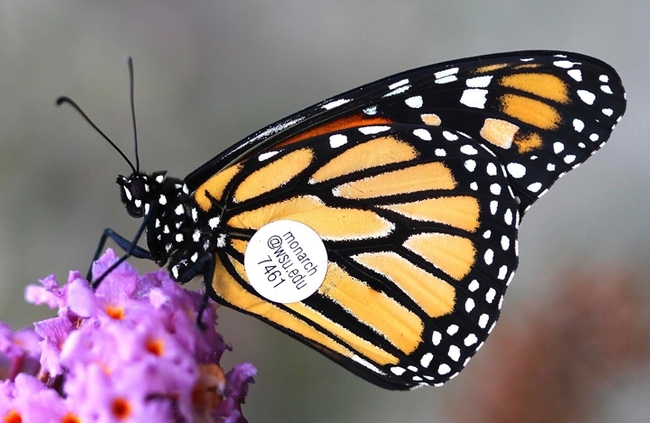
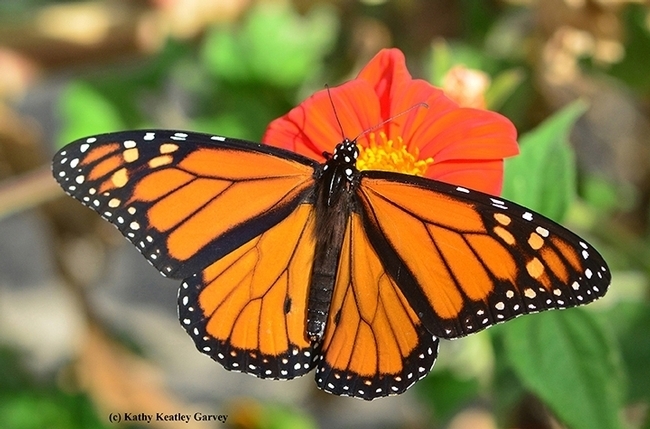
- Author: Kathy Keatley Garvey

On Friday, Aug. 26, he met with success. He spotted four within half an hour.
It all began with his stroll through the UC Davis Arboretum and Public Garden, "where construction at Wyatt Deck was finally completed and the paths have been reopened," he related in a group email.
"It was my first time there in about 3 weeks. As usual, I scoped out the big Asclepias speciosa clone and found...nothing." He then crossed over Arboretum Drive to the Environmental Horticultural gardens where he knew of another small clone of A. speciosa. "By now it was 4:30 p.m. and the area was in dappled light and shade--and there were two brilliantly fresh-looking male monarchs chasing each other in the trees above the milkweed!"
"I looked over the plants for evidence of larval feeding and found absolutely none; I can't believe they were 'born' there despite being so brilliantly fresh-looking. I then walked west on Arboretum Drive, intending to turn north toward Mrak Hall, when an old, worn male monarch flew directly in front of me near eye level. It was now 4:50.
"As I went to turn toward Mrak (Hall) a fresh-looking one--sex undetermined--was cruising up in the trees near the bridge. I believe I saw four different individuals within half an hour. That's almost as many as I've seen in Davis all year."
Then, on Aug. 29, Shapiro ventured to north Davis where Professor Louie Yang of the UC Davis Department of Entomology and Nematology and collaborators had planted several dozen narrow-leaf milkweed, Asclepias fascicularis, several years ago for their research projects. "Nearly all the plants are in seed; I only found three still in bloom," Shapiro said. "And one had a beautiful, fresh-looking male monarch nectaring at it at 11.55 a.m. I didn't try inspecting all those plants but on casual inspection, I noted no evidence of larval feeding, nor pupae nor pupal exuviae."
That's good news on The Monarch Front.
Shapiro's colleague and former doctoral student Matt Forister, the McMinn Professor of Biology at the University of Nevada, Reno (UNR), alerted him to more good monarch news: "They're passing through Reno with increasing frequency. I am personally seeing ~1 per day now. All stopping for nectar, and heading your way, Art. Looks like the production in the desert has been good." (See latest research by Forister and colleagues on "Milkweed Plants Bought at Nurseries May Expose Monarch Caterpillars to Harmful Pesticide Residues," published in the science journal Biological Conservation.)
As you may know, Shapiro has been studying the butterfly populations at 10 sites in Central California for 50 years and maintains a research website, Art Shapiro's Butterfly Site, aka Art's Butterfly World.
The North American Butterfly Monitoring Network (NABA) website praises his work as "the longest continually running butterfly monitoring project in the world":
"Art Shapiro began monitoring 10 transects in 1972 and has been conducting bi-weekly monitoring of those sites ever since. He also monitors an additional site as part of NABA's Seasonal Count Program! Art's program is the longest continually running butterfly monitoring project in the world, predating even the British Butterfly Monitoring Scheme."
Elsewhere in Davis, Bohart Museum of Entomology associate Greg Kareofelas has seen monarchs in his Davis backyard three times this year: May 6, May 11, and in early June. "A couple of days ago, in the Inner Coast Range, Glenn county I saw nine or ten adults and that many larvae."
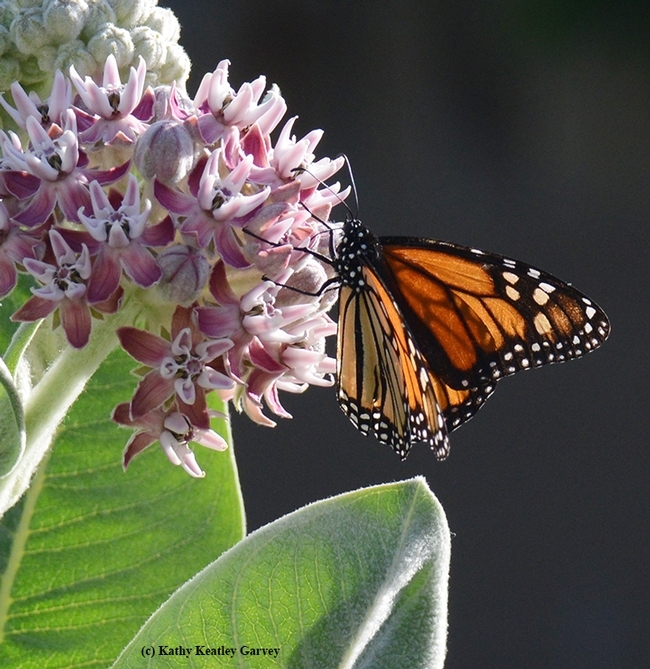
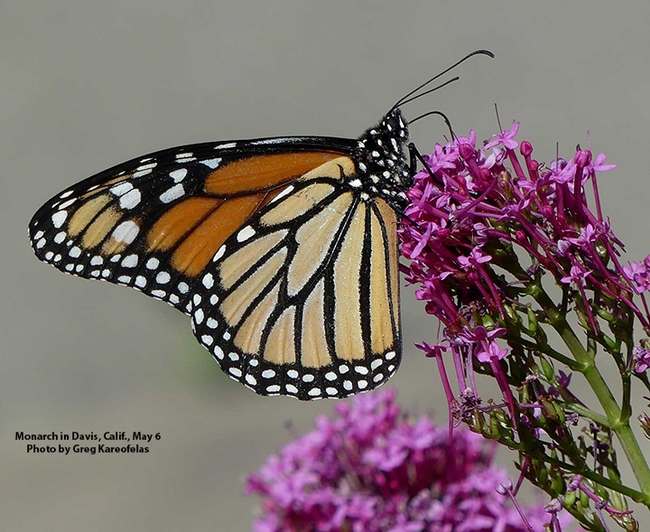
- Author: Kathy Keatley Garvey
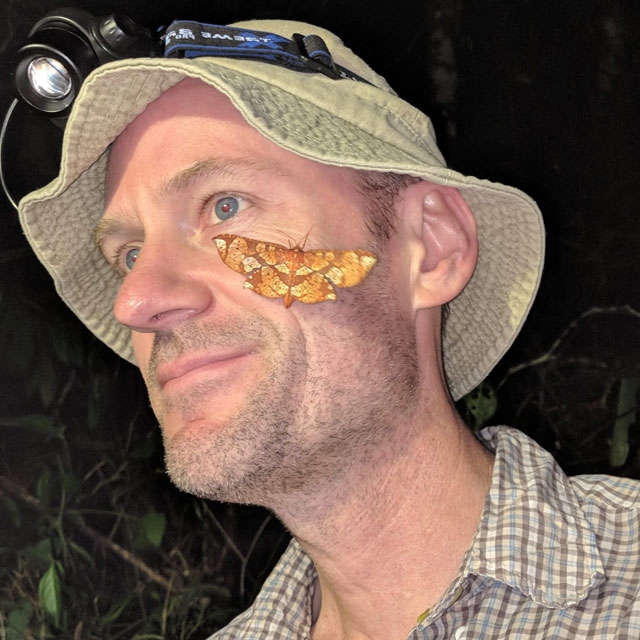
Why? Hypothesis: the milkweed may have been treated with pesticides before it was shipped to the nursery.
Newly published research led by scientists at the University of Nevada, Reno (UNR), in collaboration with the Xerces Society for Invertebrate Conservation--and appearing in the peer-reviewed science journal Biological Conservation--sheds some light on pesticide contamination of milkweed plants being sold in retail nurseries across the United States.
The article, titled "Milkweed Plants Bought at Nurseries May Expose Monarch Caterpillars to Harmful Pesticide Residues," indicates that every single plant tested in stores across the nation--every single one!--contained multiple pesticides, "even those that were labeled 'wildlife-friendly," according to the researchers, who included co-author Matt Forister, a UNR biology professor.
The team collected leaf samples from 235 milkweed plants purchased at 33 retail nurseries across the United States to screen for pesticides. "Across all samples, we detected 61 different pesticides with an average of 12.2 compounds per plant," they wrote in their abstract. "While only 9 of these compounds have been experimentally tested on monarch caterpillars, 38% of samples contained a pesticide above a concentration shown to have a sub-lethal effect for monarchs."

"In a previous study in California that primarily looked at milkweed in agriculture and urban interfaces, we had looked at a small number of plants from retail nurseries, and found that they contained pesticide but it was surprising to see the great diversity of pesticides found in these plants," Forister told Mike Wolterbeek in a Nevada Today news release. "In many ways, they are as contaminated or even worse than plants growing on the edges of agricultural fields. That was a surprise, at least to me."
Forister, who is the Trevor J. McMinn Endowed Professor in Biology, Foundation Professor, holds a doctorate in ecology from UC Davis, where he studied with major professor Art Shapiro, UC Davis distinguished professor of ecology and evolution.
Forister's doctoral student, Christopher Halsch, is the lead author of the paper. “The farther along in the life stage you go, the higher concentration you need to have a sublethal effect," Halsch explained. "For the caterpillars, this means a low concentration can have a more damaging effect than it would have on the butterflies.”
So did the plants labeled "wild-life friendly" have fewer pesticides on the leaves? No.
“That was the most shocking part," Halsch related. "The fact that plants labeled as potentially beneficial or at least friendly to wildlife are not better and in some cases might be worse than other plants available for purchase. This research sheds light on how pesticides may impact western monarchs, but many other butterflies are facing even steeper population declines, and pesticides are likely one driver.”
Thus, it's crucial that those milkweed plants that we purchase in retail stores--and elsewhere--be pollinator friendly and pesticide-free.
AsXerces' Pesticide Program Director Aimée Code, pointed out in the news article: “Everyone can take steps to address the risks we uncovered. Consumers can let their nurseries know they want plants that are free from harmful pesticides. Nursery outlets can talk with their suppliers and encourage safer practices, and government agencies can improve oversight. And it's important to keep gardening for pollinators for the long term, just take steps to reduce pesticide exposure: cover new plants the first year, water heavily, discard the soil before planting, as it may be contaminated, and avoid pesticide use.”
We asked entomologist and monarch researcher David James of Washington State University today what he thinks of the study: "We all suspected this was the case, given all the reports in social media of caterpillars dying, etc. I'm glad they did this scientific study to confirm it. Pretty shocking, really."
Indeed, scientists fear that the rapid decline of monarchs could lead to extinction. The International Union for the Conservation of Nature (IUCN) placed the migratory monarch butterfly on its Red List of threatened species on July 21, 2022, classifying it as endangered.
"In the 1990s, nearly 700 million monarchs made the epic flight each fall from the northern plains of the U.S. and Canada to sites in the oyamel fir forests north of Mexico City, and more than one million monarchs overwintered in forested groves on the California Coast," according to the Xerces Society. "Now, researchers and citizen scientists estimate that only a fraction of the population remains, monarchs have declined by more than 80% since the 1990s from central Mexico, and by more than 99% since the 1980s in coastal California."
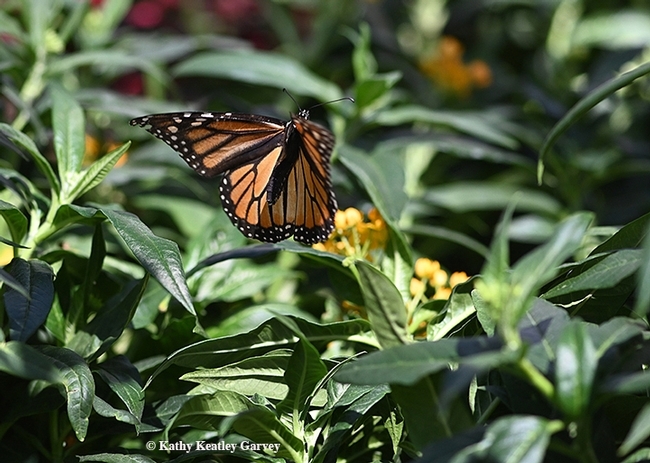
- Author: Kathy Keatley Garvey
If you're trying to find a praying mantis in the wild, go where the food source is.
Sounds pretty easy, right? But oh, they're camouflaged. They lie in wait, as ambush predators, and strike. Now you see the predator, now you don't. Where did it go?
"Observations of most species tend to peak in late summer and early fall, when individuals are at full size and seeking mates. Only the egg cases survive winter."--Field Guide to California Insects, second edition, authored by Kip Will, Joyce Gross, Daniel Rubinoff and Jerry Powell.
Lately we've been looking for what UC Davis alumnus and praying mantis expert Lohit Garikipati, now a master's student at Towson (Maryland) University, identified as a "male subadult Stagmomantis limbata" in our African blue basil.
We saw Mr. Mantis for a few days in the basil, and then he disappeared. Vanished. Gone. Evaporated. Maybe he lost his head to the current resident? That would be a subadult female Stagmomantis limbata, according to praying mantis expert Lohit Garikipati, a UC Davis alumnus studying for his master's degree at Towson (Maryland) University.
We saw the female today, tucked beneath a basil leaf, with only her head and feet showing. I
In their book, California Bees and Blooms: a Guide for Gardeners and Naturalists, UC authors Gordon Frankie, UC Berkeley professor, the late Robbin Thorp, distinguished emeritus professor of entomology at UC Davis, and Rollin Coville and Barbara Ertter, also affiliated with UC Berkeley, recommend that pollinator gardens include African blue basil, Ocimum kilimandscharicum × basilicum 'Dark Opal.'
We agree.
Plant basil and the bees will come.
So will praying mantids. They are opportunistic predators who polish off both pests and pollinators.
All are welcome in our pollinator garden. All.
